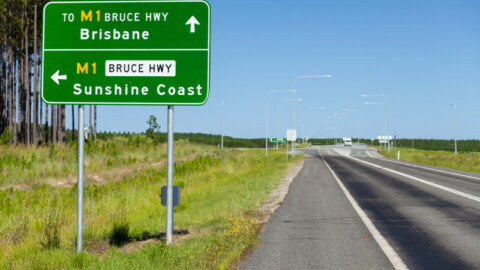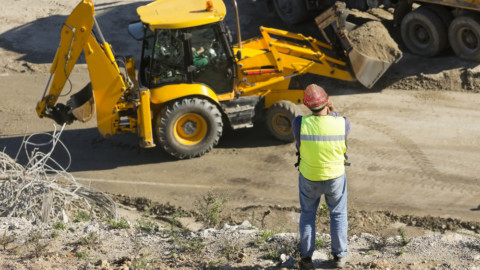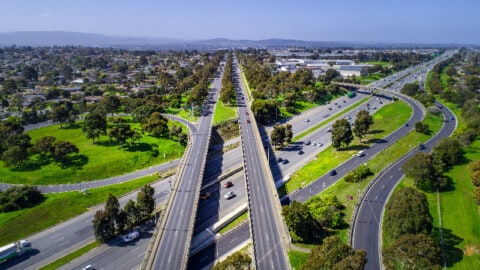By Tess Macallan, Journalist, Infrastructure Magazine
In the pursuit of its net-zero emissions by 2050 target, South Australia is taking aim at its largest emissions contributor: transportation. Here Infrastructure Magazine explores what the future of sustainable public transport will look like in Adelaide as Adelaide Metro begins its transition to a zero-emissions system.
As one of the fastest-growing sources of greenhouse gases in Australia, there is an urgent need to decarbonise the transport sector and encourage the use of clean and sustainable modes of transportation.
In South Australia, a series of cutting-edge clean fuel sources are currently being trialled across Adelaide Metro’s bus and train fleets, marking the beginning of an exciting journey towards a zero-emissions public transport system.
Hydrogen-powered future
In late August 2023, Adelaide Metro welcomed two hydrogen fuel cell buses to its bus fleet as part of a two-year trial. The vehicles are based at the Morphettville bus depot and deployed on routes across Adelaide.
“Hydrogen fuel cell buses represent a rapidly emerging, green alternative technology,” Department for Infrastructure and Transport Chief Executive, Jon Whelan, said. Testing is also well underway for South Australia’s first full electric battery bus, which arrived in January 2023, and a further nine full-battery electric buses are on order, pending the results of the trial.
It is hoped the six electric buses will join the existing fleet of 24 hybrid-electric buses already on the state’s roads. Further assessment is underway to inform a full transition plan and business case that determines funding requirements to achieve a zero-emission bus fleet.
“The rail fleet isn’t being left behind either – with the first hybrid-diesel train now in service. This train is fitted with the new Energy Storage and Recovery System,” Mr Whelan said.
The system works by storing kinetic energy generated when the train brakes to an onboard battery, converting it into electrical energy to power normal train operations – decreasing stress on the engine and fuel consumption by approximately 16 per cent.
These rail-cars have been coupled together and testing of the two-car train is complete. This is the first of 50 diesel rail-cars expected to be fitted with the hybrid system, with the trains to run on the Outer Harbor, Grange, Port Dock, and Belair lines.
The battery will also serve as an alternative power source, replacing the conventional diesel engine, to supply electricity auxiliary functions such as lighting and air-conditioning at the train platform within Adelaide Railway Station. This approach aims to reduce noise, emissions, and air pollution.
Electrifying railways
Installation of the Energy Storage and Recovery System on the remaining trains will be progressively rolled out, with all trains expected to be in passenger service with the new system by mid-2024. Once fully installed, Adelaide Metro will save an estimated 2,400t of CO2 emissions annually.
Marking a significant milestone, the Gawler line is now running exclusively with electric trains following the arrival of a tenth Electric Multiple Unit (EMU) in early August. The remaining two of the 12 new trains ordered are expected to be introduced into service by the end of 2023.
In the meantime, diesel trains may occasionally run on the line due to maintenance and fleet improvements across the network. The EMUs have been custom-fitted for the Adelaide Metro fleet by Alstom, a locally represented company engaged to provide maintenance services to the metropolitan train operator, Keolis Downer Adelaide.
Once the remaining EMU train enters service, Adelaide Metro will have a fleet of 34 EMU trains to maintain fully electric services on the Gawler, Seaford and Flinders lines. Looking ahead, the department is undertaking a feasibility study into the most appropriate zero-emission technology for the train fleet, for when the existing diesel trains reach retirement age in the early 2030s.
“By continuing to decarbonise our public transport network, we’re not only delivering a more sustainable future, but improving the experience for all our customers – with more efficient, quieter and safer services,” Mr Whelan said.
Perks for passengers
As well as being better for the environment, full battery electric buses offer a range of benefits for passengers. They offer smoother and quieter rides, while eliminating noise and fuel-based pollution.
The benefits of hydrogen-powered vehicles over battery electric buses include faster refuelling and greater range, which may be critical to delivering services to the outer metro areas and into the regions. Hydrogen complements battery electric vehicle technology by providing a viable cleaner, greener, emissions-free technology that can power buses, trains or other heavy vehicles carrying heavy loads.
“Hydrogen fuel carries significantly more energy than the equivalent weight of batteries, which is important as the State Government evaluates future technology options, including powering trains on the Belair, Outer Harbor lines and Grange and Port Dock connections.
“Once the installation of the Energy Storage and Recovery System on the train fleet is completed, Adelaide Metro will save an estimated 2,400t of CO2 emissions annually,” Mr Whelan said.
Investing in public transport can encourage communities to reduce congestion, contribute to a greener future and save transportation costs. With the rollout of tap and pay technology, it’s becoming even easier for South Australians to travel sustainably.



















